Hauling it All: How To Make Your Own Panniers
Ready to make your own panniers? Enter the fully waterproof, highly durable bucket panniers made from recycled kitty-litter buckets.
Panniers can come at a high price. If you’re grappling with cost or enjoy the independence and satisfaction that comes from making things yourself, then this tutorial is for you. From carrying groceries to touring long distances, these low-budget, DIY panniers are fully functional. Additionally, they can serve as a great way to test and evaluate your situation before investing in a commercial pair.
To determine how to set up your bike for proper weight distribution, think about what your primary intended use will be and use this resource to figure out Where to Carry A Load (PDF file).
What you will need
Materials for one pannier:
- One kitty-litter bucket (recommend Purina Tidy Cats 35 lb. pail with attached lids)
- Two two-inch tarp hooks
- Hardware
- Four 10-32 x ½” bolts
- Four 10-32 nylon-insert lock nuts
- Four #10 flat washers
- One heavy-duty nylon bungee with sliding hooks (approximately 1/2 inch thick)
- Reflective tape and/or decorative stickers (optional)
Tools:
- Electrical drill
- 1/4-inch and 3/8-inch drill bits
- Dremel tool or side-cutting pliers
- Screwdriver
- Socket wrench
- Permanent marker
Note: Check to see if there are tool-lending libraries in your area if you need access to tools.
Instructions
1. Hold the candy-cane-shaped tarp hooks near the top edge of the bucket and use a permanent marker to outline the hook width.
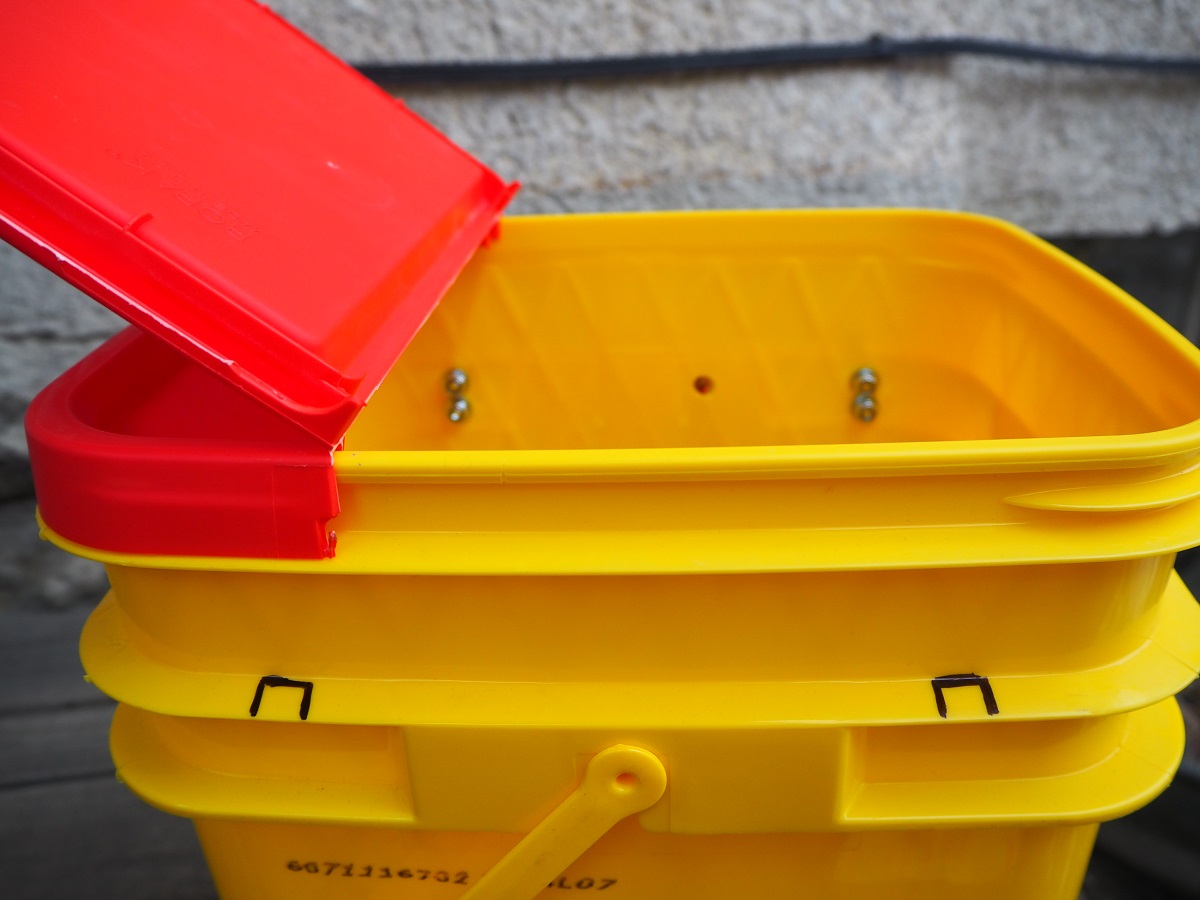
2. Use a Dremel tool or side-cutting pliers to remove the small plastic square cut-outs. The hooks will attach here and sit flush against the bucket.
3. Place your tarp hooks, candy-cane side up, in these slots and use a permanent marker to locate where the holes are to be drilled. Set the hooks aside.
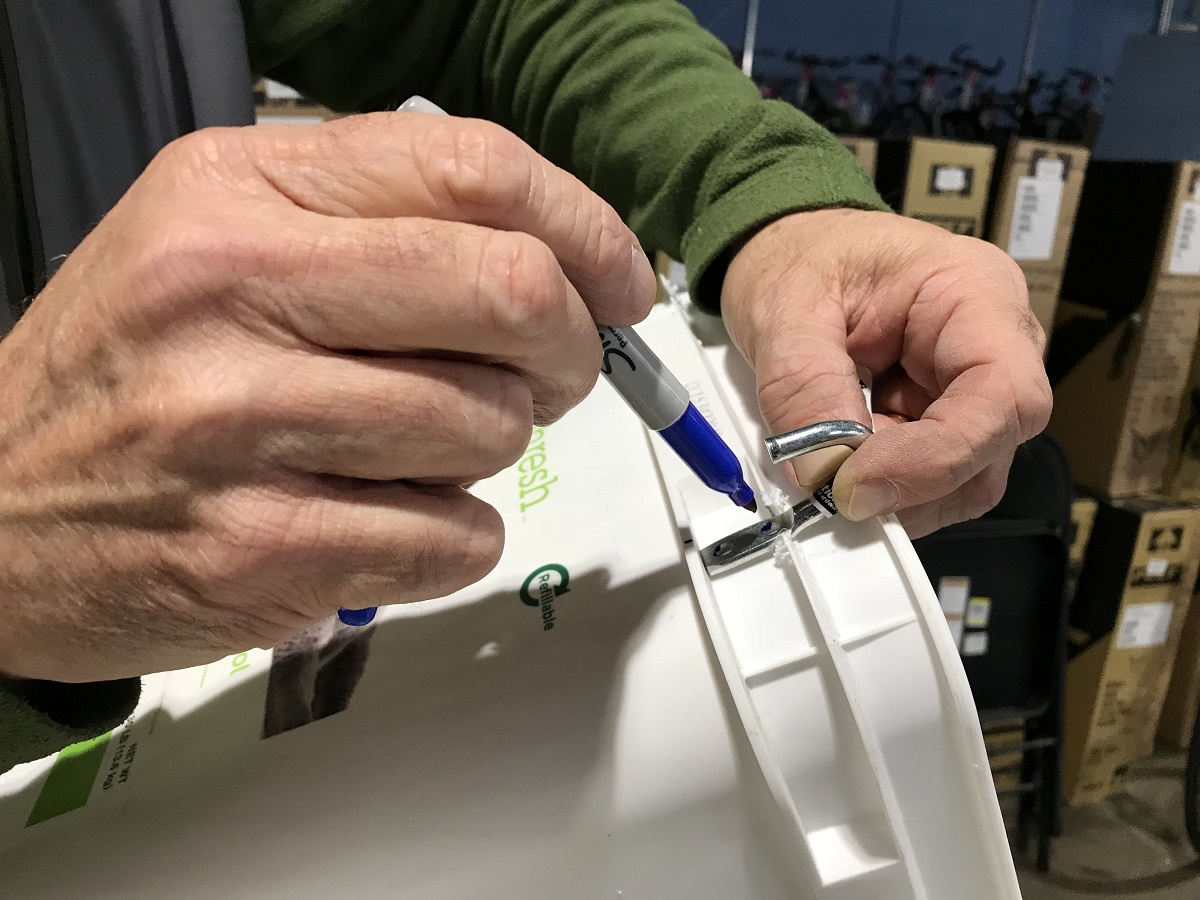
4. Use a 1/4-inch bit to drill all four holes in the bucket. Use a screwdriver and socket wrench to fasten them to the outside of your bucket using the screws, nuts, and washers. The washer goes on the inside of the bucket before the nut gets screwed on.
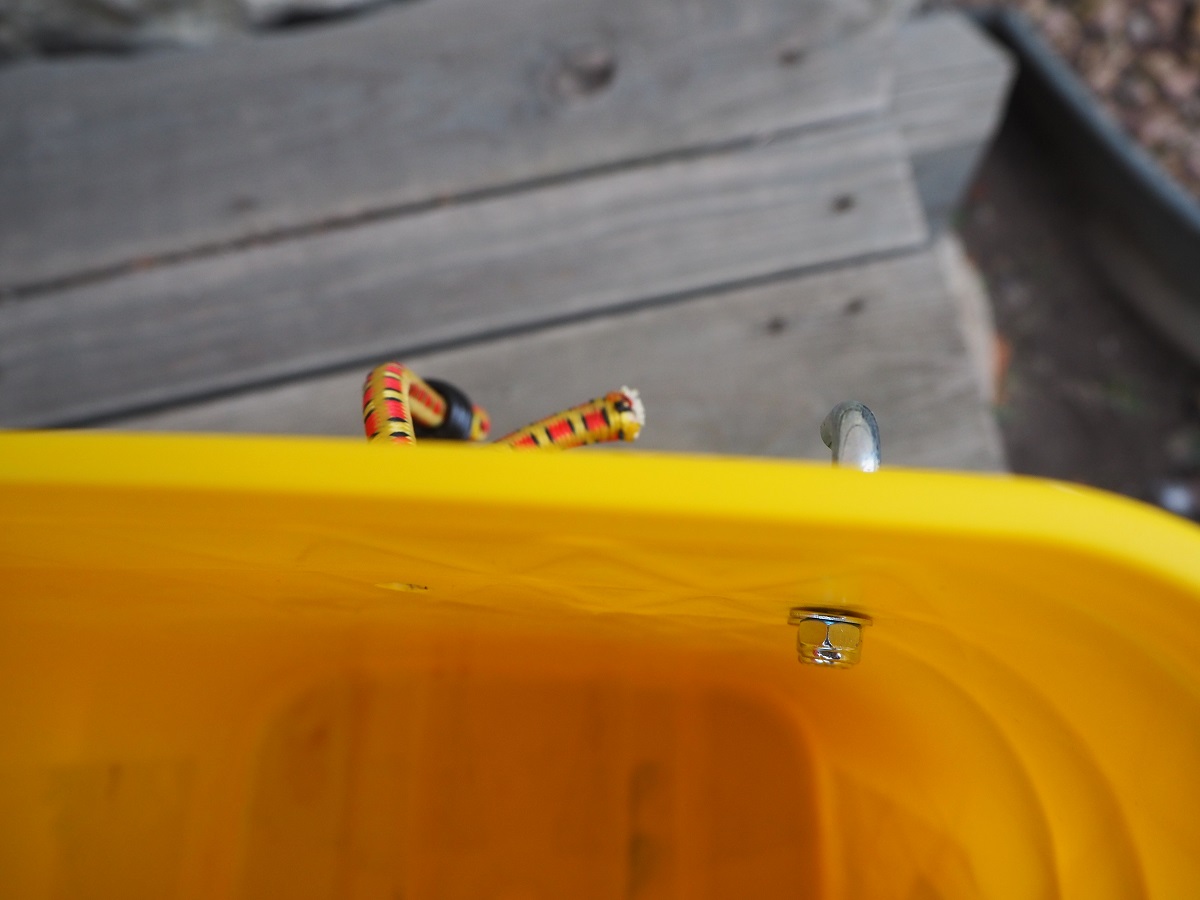
5. Using a 3/8-inch bit, drill a hole in the top middle of your bucket to be used later for your bungee.
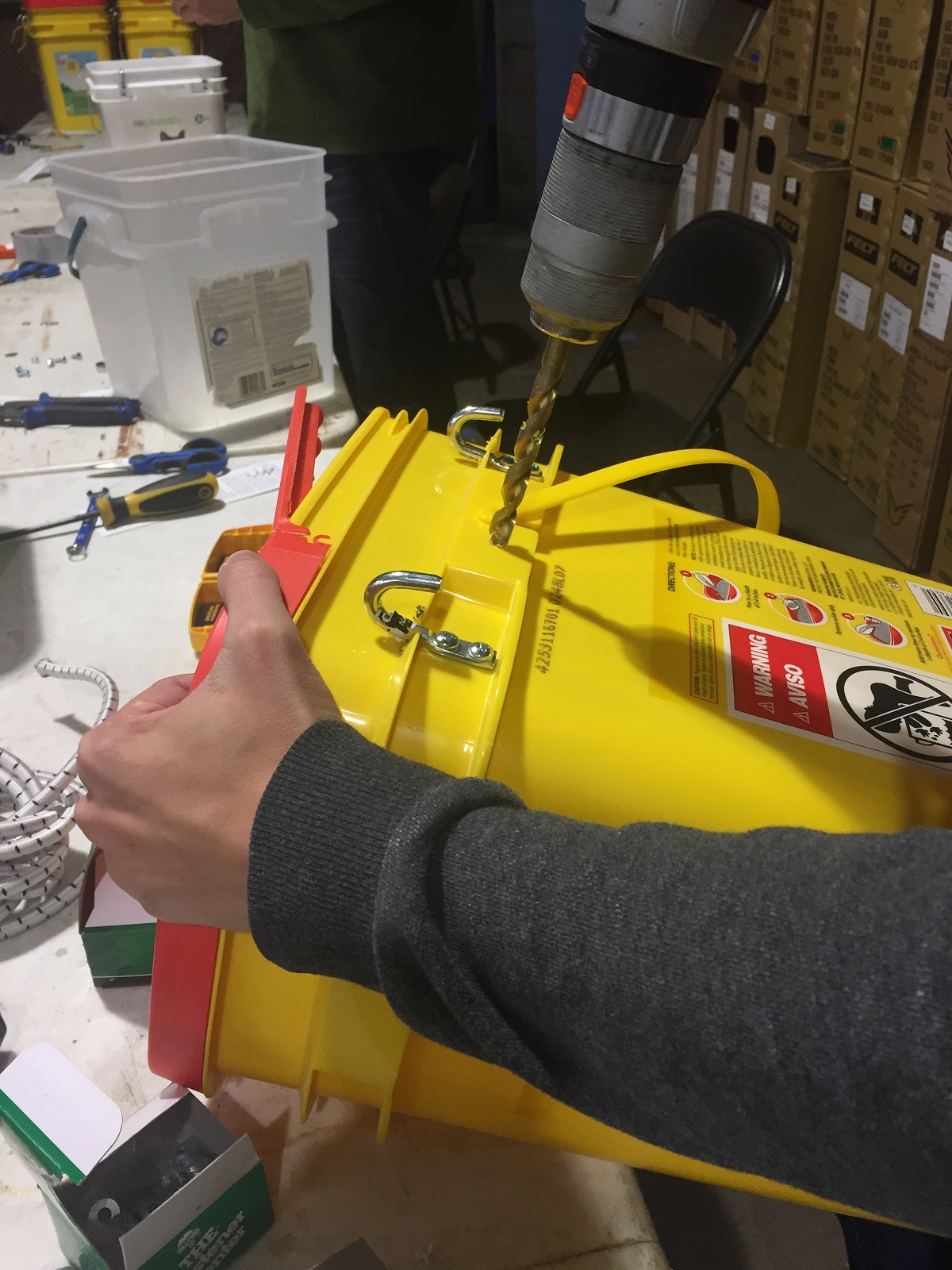
6. Take your bungee and cut the cord close to the hook at one end to remove it. Stick the cord side through the hole you just drilled. Knot the end of the cord that you put through. Then pull snug so the knot tucks under the lip of the bucket.

7. Attach the hook end of bungee to the bottom attachment on the rear rack of the bike. Adjust the length of the bungee to be fairly taut when pulling hooks over the top of your rear bike rack.
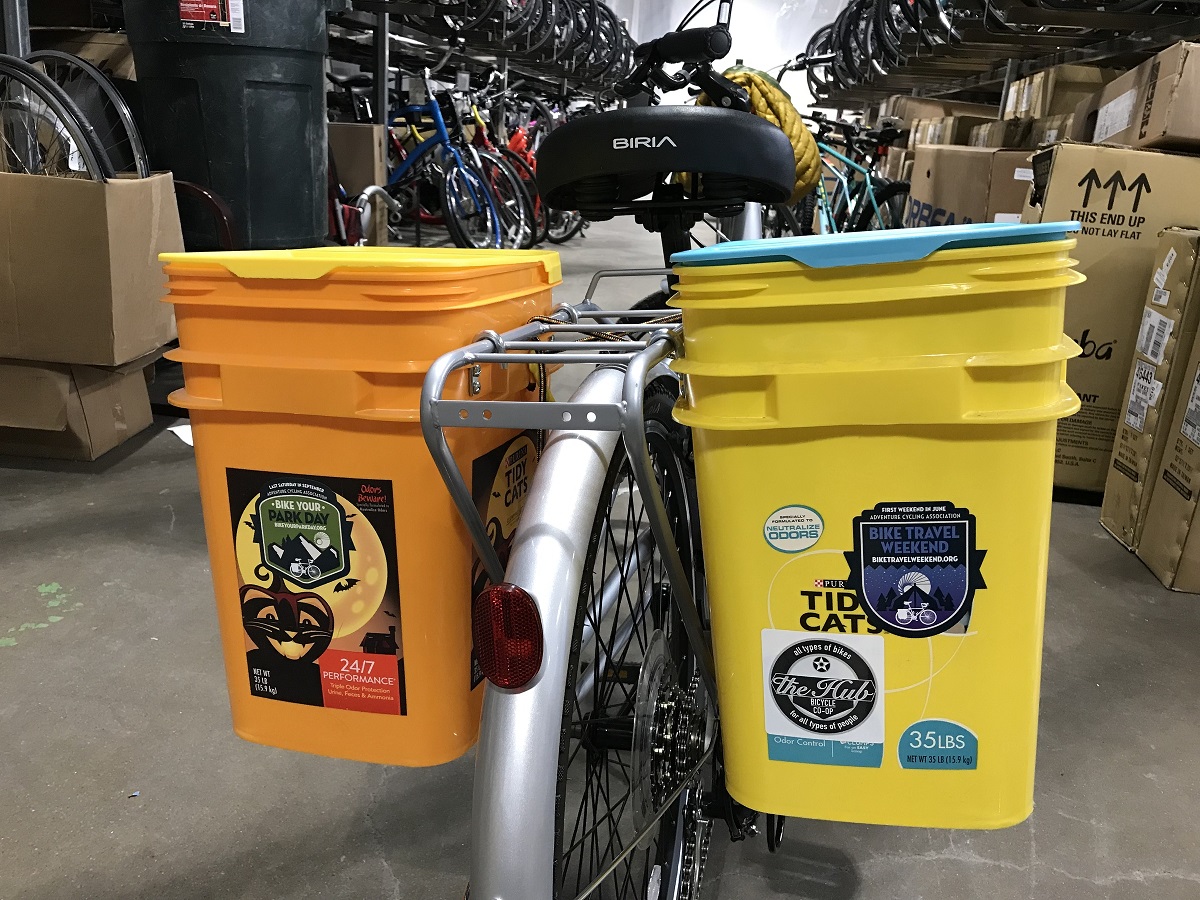
8. Strip off the advertising and personalize with your new panniers with stickers and reflective tape.
Happy travels!
This story has been updated and was originally published on December 29, 2017.
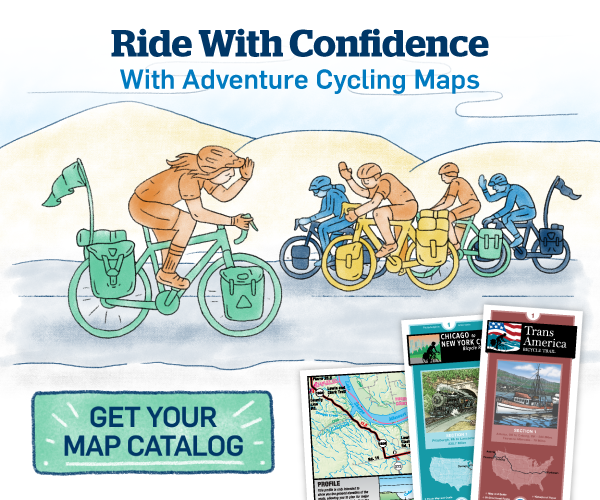
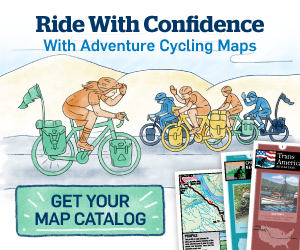
Comments
I always take bucket panniers like these on tour - they're awesome!!
I would recommend a slight change from the post's method - placing the hooks higher up on the bucket so that the lid is flush level with the top of your rack. This makes it easier to strap and remove items on the rack itself.
Oh, one more tip! (Can you tell I'm practically an evangelist for these things?) Put the opening of the bucket on the front side, rather than the rear. I've found sometimes the lid is liable to come loose, especially if packed very full... once I lost my favorite hat when the lid popped open and it blew out! With it opening towards the front, your risk of losing any items is minimized, and if you look back and see the lid has popped open, you don't need to get off the bike to close it.
P.S. The commercially available hardware set mentioned above more or less fixes the kitty litter buckets to the rear rack. Thus, you cannot use the buckets as a camping chair and table.
I know these kitty litter buckets work well. I know two young ladies who rode using only two of those on the rear rack. The first used a pre-made kit of hardware available from https://lonepeakpacks.com/index.php/packs/accessories/p050.html Though it may seem more expensive than going to the hardware store, I do recommend this hardware set because of the durable plastic hangers and the lower custom bungee that keeps the rattling to an absolute minimum. So do the plastic hangers. Giuliana rode from Cannon Beach, Oregon to San Diego, California in 3 weeks with this setup and without incident. Next was Jackie who rode from Vancouver, British Columbia to Mexico City with a kitty litter setup much as described in this article. It took her about 3 months, making it to her Christmas destination with her extended family. They rode a good part of the distance together with other bike tourists, who, like me, came and went with the ever changing group of self-contained riders. Giuliana and Jackie both in their early twenties referred to themselves as the Bucket Babes. Giuliana was/is from Bucharest, Romania studying aeronautical engineering. Jackie is unique in that she has citizenship in Canada, the U.S., and in Mexico. That's what happens if you have dual citizenship in both Canada and Mexico. Then you have to be born in the U.S. That's how that happens.
What a great idea for a workshop! I like that they double as a chair at the end of the day. Well done, Sara!
Oy! I was just wondering about options for carrying a seat around on the bike, and using this sort of container solves the heck out of that!
Forgot Password?
Enter your email address and we'll send you an email that will allow you to reset it. If you no longer have access to the email address call our memberships department at (800) 755-2453 or email us at memberships@adventurecycling.org.
Not Registered? Create Account Now.